Idrw Team
SOURCE: IDRW.ORG TEAM.
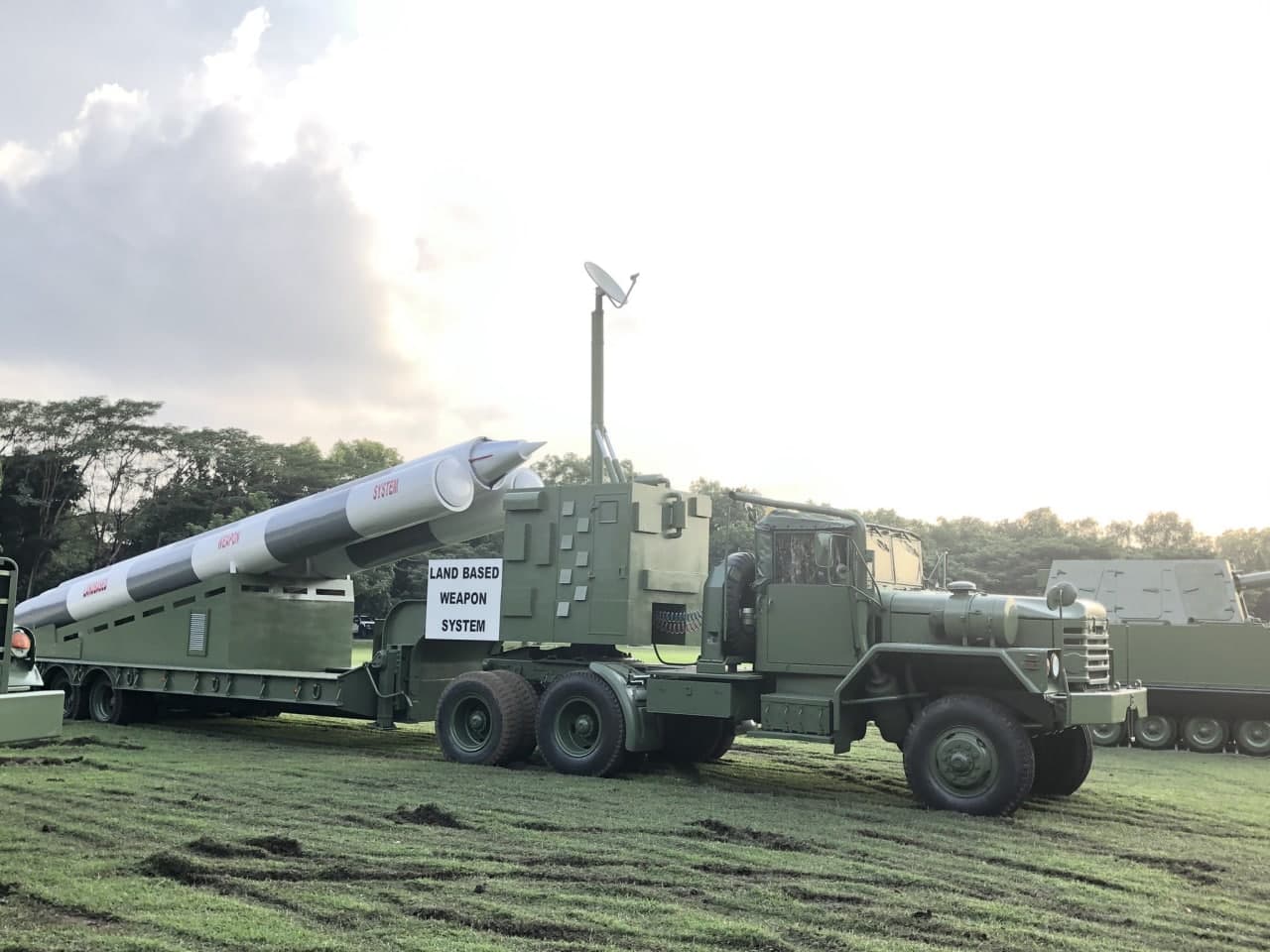
India is gearing up to deliver the first batch of BrahMos anti-ship cruise missiles to the Philippines by the end of March. This shipment marks a significant milestone in the growing defense partnership between the two nations.
The delivery, originally planned for late 2023, was postponed at the Philippines’ request. This delay allowed for the completion of a new base specifically designed to house the BrahMos missile batteries. The BrahMos Corporation, a joint Indo-Russian venture, will be responsible for sending both the ground equipment and the missiles themselves.
Continue readingSOURCE: IDRW.ORG TEAM.
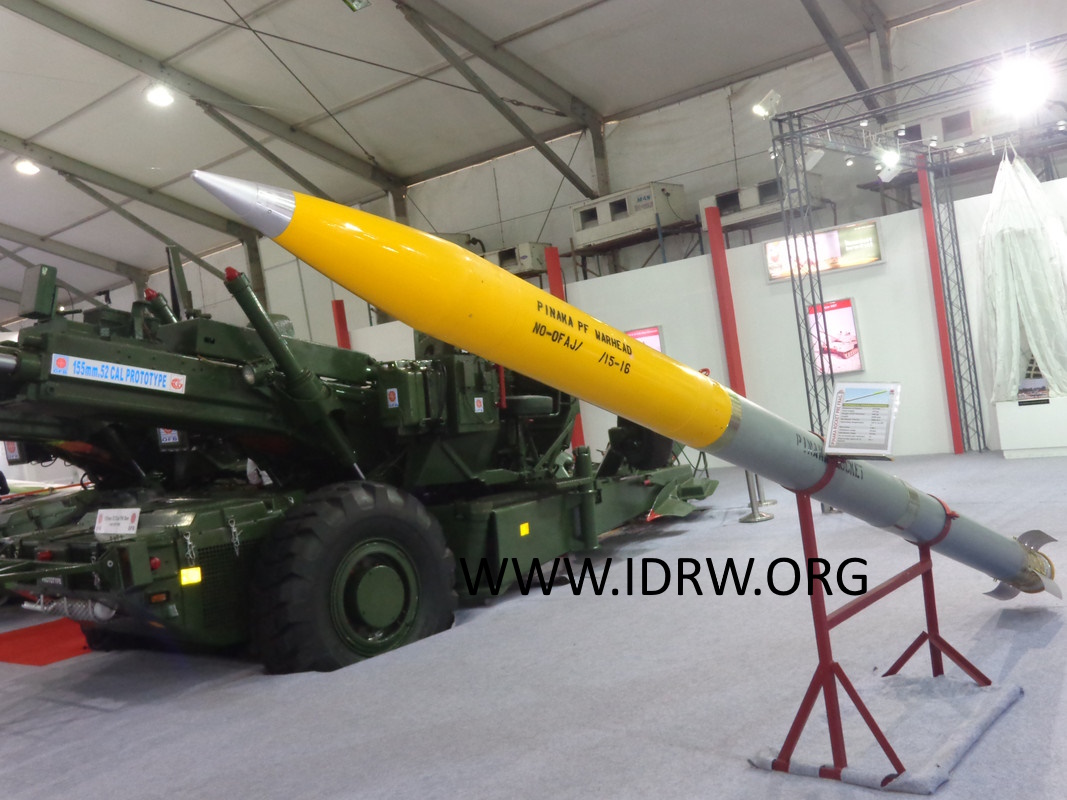
Satyanarayan Nandlal Nuwal, Chairman of Solar Industries India Limited (SOLARINDS), confirmed a significant development for Indian defense exports. Armenia placed orders for three variants of the Pinaka multi-barrel rocket launcher (MBRL) system in a deal valued at US$265 million (?2,000 crore) last year.
This marks the first-ever export of the indigenously developed Pinaka system. Armenia’s order encompasses four Pinaka batteries along with other defense equipment. The Pinaka comes in three variants:
Continue readingSOURCE: IDRW.ORG TEAM.

India’s space ambitions have taken a significant leap forward with the formalization of the New Generation Launch Vehicle (NGLV) project at Sriharikota. Aimed at establishing India’s own space station and lunar exploration missions, the NGLV project represents a bold stride towards self-reliance and innovation in space exploration. Powered by green fuel combinations, boasting higher payload capabilities, and emphasizing reusability, the NGLV promises to revolutionize India’s space program and reduce launch costs significantly.
One of the defining features of the NGLV is its utilization of green fuel combinations such as methane-liquid oxygen or kerosene-liquid oxygen. This environmentally friendly propulsion system not only reduces carbon emissions but also enhances the rocket’s efficiency and performance. With a projected payload capacity of up to 10 tonnes to Geostationary Transfer Orbit (GTO), the NGLV surpasses India’s current heaviest rocket, the LVM-3, by more than double. This enhanced payload capability opens up a myriad of possibilities for launching larger satellites, conducting interplanetary missions, and supporting future space exploration endeavors.
Continue readingSOURCE: IDRW.ORG
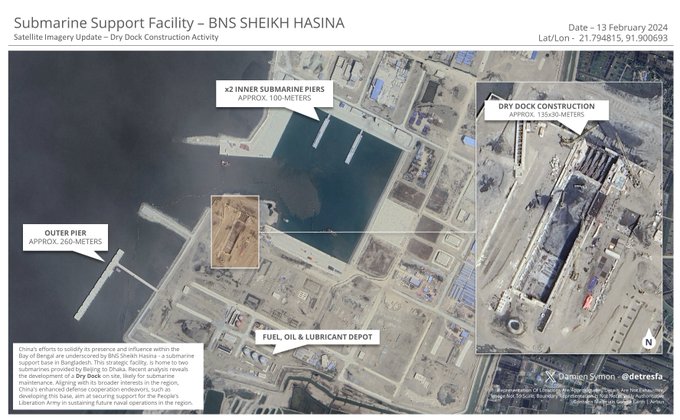
Satellite images reveal the progress of a dry dock at the BNS Sheikh Hasina naval base in Bangladesh, constructed with China’s assistance. This development signifies a deepening defense partnership between the two nations, potentially solidifying China’s influence in the Bay of Bengal region.
The BNS Sheikh Hasina base, located at Pekua in Cox’s Bazar, aligns with Bangladesh’s “Forces Goal 2030” program, a military modernization initiative. The base’s dry dock suggests maintenance capabilities for submarines, raising concerns for India.
Continue readingSOURCE: IDRW.ORG TEAM.

The Armament Research & Development Establishment (ARDE), a premier laboratory of India’s Defence Research & Development Organisation (DRDO), is seeking a qualified consultant to support the engineering design of next-generation Pinaka rocket warhead systems.
The consultant will be responsible for the meticulous engineering design of various warhead systems and their vital components for the Pinaka rocket family.
Continue readingSOURCE: IDRW.ORG

The Indian drone industry is witnessing a growing focus on counter-unmanned aerial systems (C-UAS) solutions, particularly those utilizing directed energy weapons (DEWs). This shift comes as traditional C-UAS methods, often relying on kinetic means like jamming or physical destruction, raise safety concerns in populated areas.
While kinetic methods have been the mainstay of C-UAS defense, they come with limitations. Shooting down drones can pose risks of falling debris in urban environments, while jamming can disrupt legitimate radio frequencies.
Continue readingSOURCE: IDRW.ORG
The Indian Air Force (IAF) continues to bolster its training capabilities with the successful first flight of the fifth LCA-Tejas trainer aircraft, designated LT-5205. This milestone comes just weeks after the fourth trainer, LT-5204, took to the skies, signifying a significant ramp-up in production by Hindustan Aeronautics Limited (HAL).
The IAF received its first LCA Tejas trainer aircraft in October 2023, marking a major step forward in pilot training for the indigenously developed light combat aircraft. Since then, HAL has delivered four additional trainers, including LT-5205, with all undergoing flight testing and scheduled for induction into the IAF.
Continue readingSOURCE: IDRW.ORG TEAM.
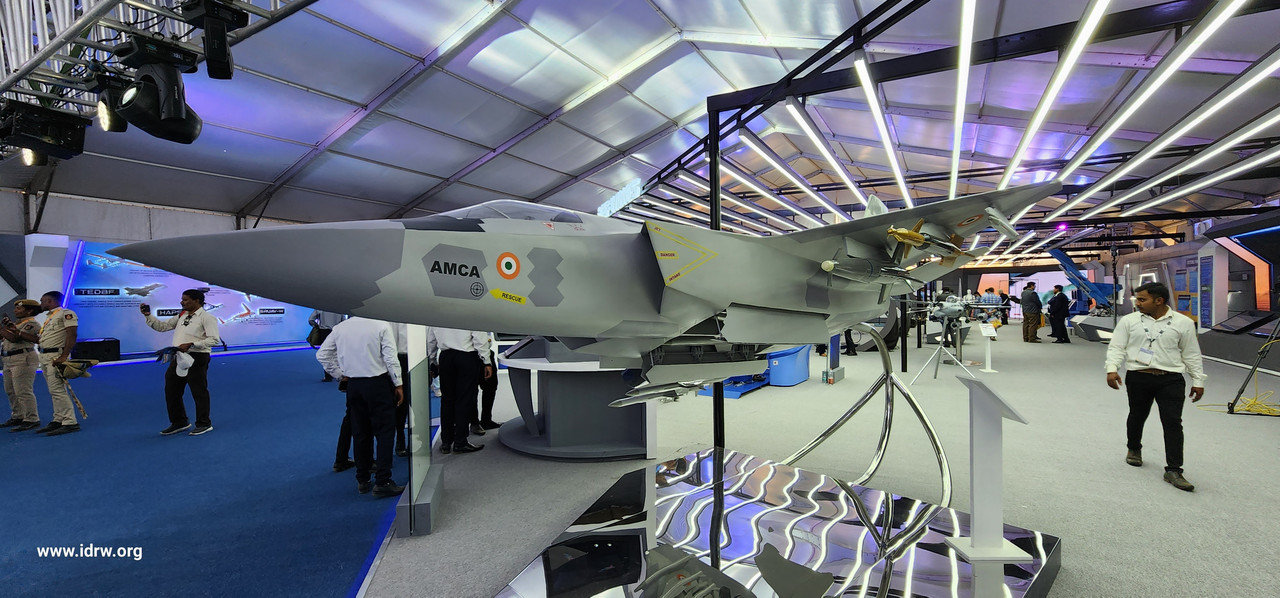
India’s Advanced Medium Combat Aircraft (AMCA) program stands as a testament to the nation’s commitment to indigenous defense development. While recent advancements in fighter jet programs from South Korea and Turkey have garnered attention, India’s approach to self-reliance in aerospace technology deserves recognition and appreciation.
The Korean KF-21 Boramae and Turkish KAAN fighter jet programs, while ambitious, have faced challenges and dependencies on foreign technology. As highlighted by defense expert Ranesh Rajan, the KF-21 program heavily relies on American-origin technology, with significant contributions from companies like Raytheon and Northrop Grumman. Similarly, Turkish efforts have seen generous assistance from BAE Systems and American firms.
Continue readingSOURCE: IDRW.ORG
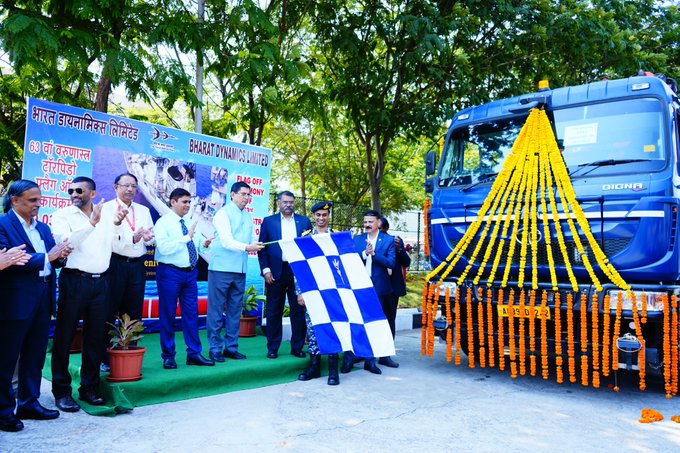
In a significant milestone for India’s defense capabilities, Bharat Dynamics Limited (BDL) has successfully delivered the final batch of Varunastra heavyweight torpedoes to the Indian Navy. The last torpedo was flagged off by Dr. Y Sreenivas Rao, Director General (Naval Systems & Materials) at BDL’s Visakhapatnam unit.
The Varunastra, named after the Hindu god of the oceans, is a heavyweight, electrically-propelled torpedo designed to eliminate submarines in both deep and shallow waters. Developed by the Naval Science and Technological Laboratory (NSTL) of the Indian Navy, this advanced weapon system boasts a high degree of indigenous content, exceeding 95%.
Continue readingSOURCE: IDRW.ORG

In a display of the Indian Army’s conventional deterrence capabilities, the Rising Sun missile specialists successfully launched a BrahMos missile over the Andaman and Nicobar Islands today. The supersonic missile soared high above the islands, highlighting the precision and power of India’s missile technology.
The Indian Army’s Eastern Command stated that this exercise served to showcase the “unparalleled might” of the BrahMos missile and the “formidable force” of the Rising Sun BrahMos warriors. The successful launch is seen as a significant reminder of India’s commitment to defending its sovereignty and maintaining peace and stability in the Indo-Pacific region.
Continue readingSOURCE: IDRW.ORG

In a display of growing defense cooperation between India and the United States, the Indian Navy’s Hawks 132 trainer aircraft from INAS 551 participated in joint exercises alongside the US Air Force’s B-52 Stratofortress strategic bomber over the Bay of Bengal as part of Ex TigerTriumph-2024. A C-130J Super Hercules transport aircraft from the USAF also joined the formation flight.
This exercise is not the first time the US has deployed a strategic bomber to participate in military drills with India. In 2019, a B-1 Lancer bomber was involved in similar exercises. The participation of these powerful bombers underscores the deepening strategic partnership between the two nations and their shared commitment to maintaining a free and open Indo-Pacific region.
Continue readingSOURCE: IDRW.ORG TEAM

The Tejas Mk1A fighter aircraft, designated LA5033, has been spotted sporting several modifications compared to its predecessor, the Mk1. These changes, as compiled by idrw.org, provide insights into the improvements being made for this upgraded variant.
Enhanced Situational Awareness:
- Missing RWR Sensors: The vertical tail appears to lack the Radar Warning Receiver (RWR) sensors present on earlier Mk1 models. This might indicate an alternate placement for these sensors or an entirely new RWR system altogether, potentially enhancing threat detection capabilities.
SOURCE: IDRW.ORG TEAM.

Prateek Dhawan, the Director of Dg Propulsion Private Limited (DPPL), an Indian aerospace company, envisions a future where their jet engines power not just aircraft, but also jetpacks.
DPPL has successfully tested their indigenously developed DG J40 jet engine, boasting a thrust capacity of 40 kgf. Their vision extends beyond this initial success, aiming to configure four such engines for a human-carrying jetpack capable of achieving significant flight distances./
Continue readingSOURCE: IDRW.ORG
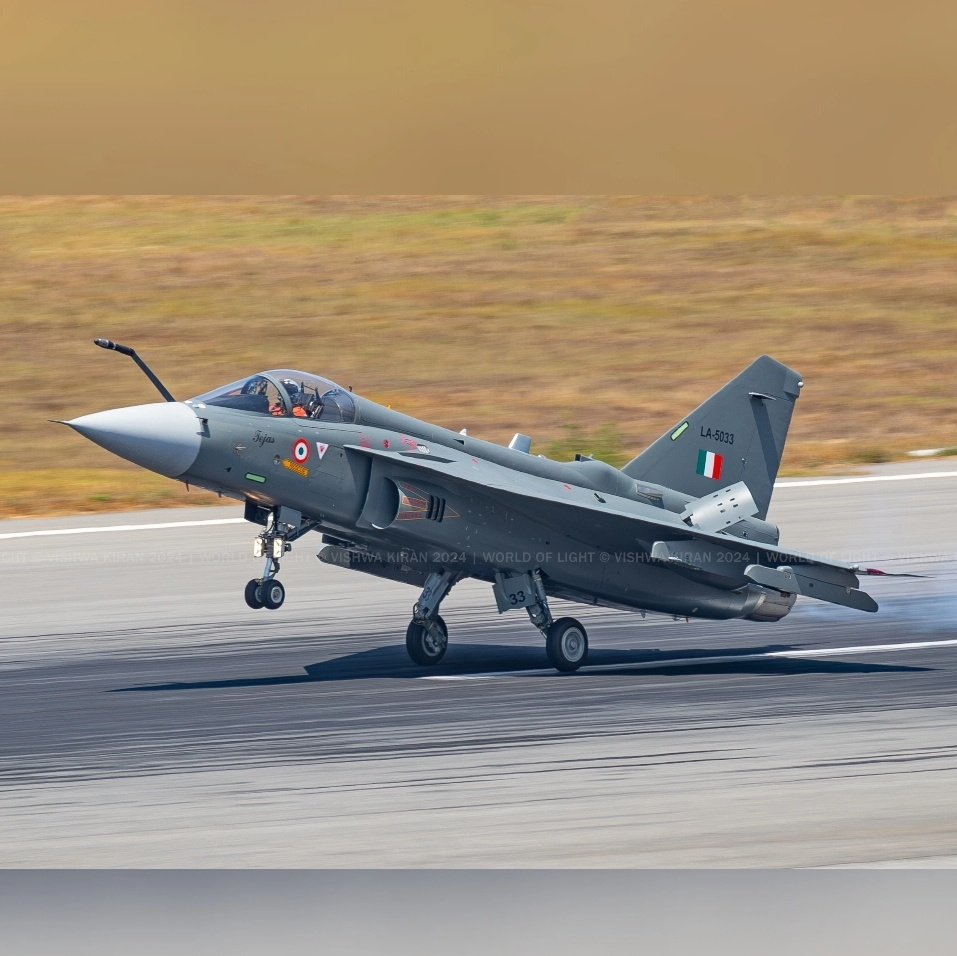
The skies over Bengaluru witnessed a landmark event recently with the successful maiden flight of the Tejas Mk1A fighter jet. This indigenous aircraft has garnered praise not just for its performance, but also for the significant improvements made in its build quality and maintainability.
Images of the Mk1A reveal a key feature numerous quick-access panels adorning the underside of the fuselage. This design shift prioritizes ease of maintenance, allowing for quicker access to critical components during ground checks and repairs. This focus on serviceability is a major step forward and reflects a credit to the tireless efforts of HAL and its network of suppliers.
Continue readingSOURCE: IDRW.ORG

Hindustan Aeronautics Limited (HAL) celebrated a momentous occasion yesterday in Bengaluru with the successful maiden flight of the LCA Tejas Mk1A fighter jet. Following the impressive test flight, HAL Chairman, Ananthakrishnan, addressed the media, highlighting the significance of this achievement.
“This is a big step today,” Ananthakrishnan declared, emphasizing the crucial role the Mk1A’s first flight plays in advancing towards the delivery of these aircraft to the Indian Air Force (IAF). He elaborated on HAL’s commitment to fulfilling IAF requirements, stating, “We are also looking to deliver one more LCA trainer aircraft to the IAF before March 31.” This commitment builds upon the foundation laid by the previous delivery of four trainer-version aircraft to the IAF.
Continue reading